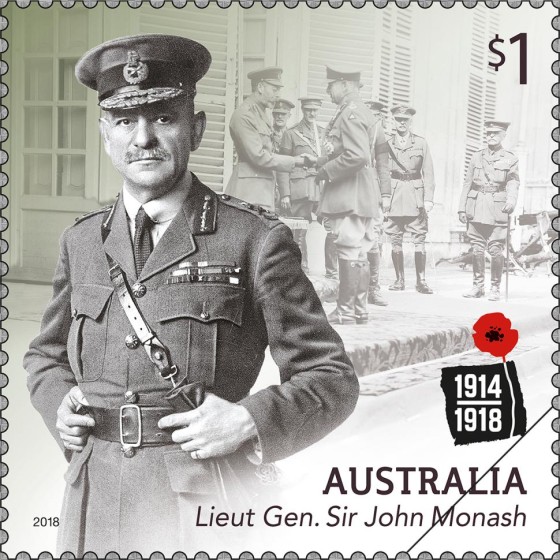Sir John Monash was an outstanding Australian military commander and civic leader whose innovative approaches during World War I significantly influenced modern military tactics. Born in 1865 in Melbourne to Jewish immigrants from Prussia,Monash was not only a brilliant military strategist but also a civil engineer and an advocate for education and veterans’ affairs.
Early Life and Education: Monash was educated at Scotch College and later studied arts, engineering, and law at the University of Melbourne. He worked as a civil engineer and played a vital role in the development of Victoria’s infrastructure before his military career began.
Military Career: Monash joined the university company of the militia in the 1880s and gradually rose through the ranks. He served in the Boer War as part of the intelligence staff but truly distinguished himself during World WarI. He commanded the 4th Brigade at Gallipoli in 1915 and later led the 3rd Australian Division in France. In 1918, he was appointed commander of the Australian Corps, then the largest corps on the Western Front.
Monash was renowned for his comprehensive planning and integration of infantry, artillery, tanks, and aircraft, which was considered revolutionary at the time. One of his most famous battles was the Battle of Hamel on July 4, 1918. This battle is often cited as a brilliant example of combined arms tactics and meticulous planning. The success of this 93-minute battle demonstrated Monash’s ability to coordinate different forces seamlessly and effectively.
Post-War Contributions: After the war, Monash returned to Australia and dedicated himself to building the nation. He became the manager of the State Electricity Commission of Victoria, where he was instrumental in developing the state’s electric power supply. He also played a significant role in the creation of the Shrine of Remembrance in Melbourne, a major war memorial. Additionally, Monash advocated for veterans’ welfare and was deeply involved in education, becoming the Vice-Chancellor of the University of Melbourne.
Legacy and Honours: Monash was knighted in 1918 and made a general in 1929, the highest rank in the Australian Army. His legacy includes his contributions to military tactics, civil engineering, and public service. He is celebrated as one of Australia’s greatest military and civilian leaders, and numerous institutions and places are named after him, including Monash University in Melbourne.
Monash passed away in 1931, but his impact continues to be felt in both military and civilian spheres. His leadership style, emphasising detailed planning and the integration of technology and logistics, remains influential in modern military strategy.
#lestweforget

